
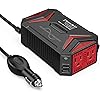

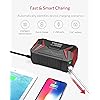
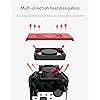
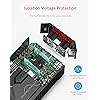

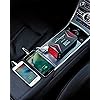
Ready to go? Add this product to your cart and select a plan during checkout. Payment plans are offered through our trusted finance partners Klarna, PayTomorrow, Affirm, Afterpay, Apple Pay, and PayPal. No-credit-needed leasing options through Acima may also be available at checkout.
Learn more about financing & leasing here.
30-day refund/replacement
To qualify for a full refund, items must be returned in their original, unused condition. If an item is returned in a used, damaged, or materially different state, you may be granted a partial refund.
To initiate a return, please visit our Returns Center.
View our full returns policy here.
Color: Black
Features
Brand: BESTEK
Recommended Uses For Product: Vehicle
Power Source: 110v,Corded Electric
Wattage: 300 watts
Model Name: MRZ3011HU
Manufacturer: BESTEK
Brand: BESTEK
Model: MRZ3011HU
Item Weight: 1.4 pounds
Product Dimensions: 8.1 x 5.3 x 2.6 inches
Item model number: MRZ3011HU
Is Discontinued By Manufacturer: No
Manufacturer Part Number: MRZ3011HU
Voltage: 12 Volts
Wattage: 300 watts
Date First Available: September 21, 2018












